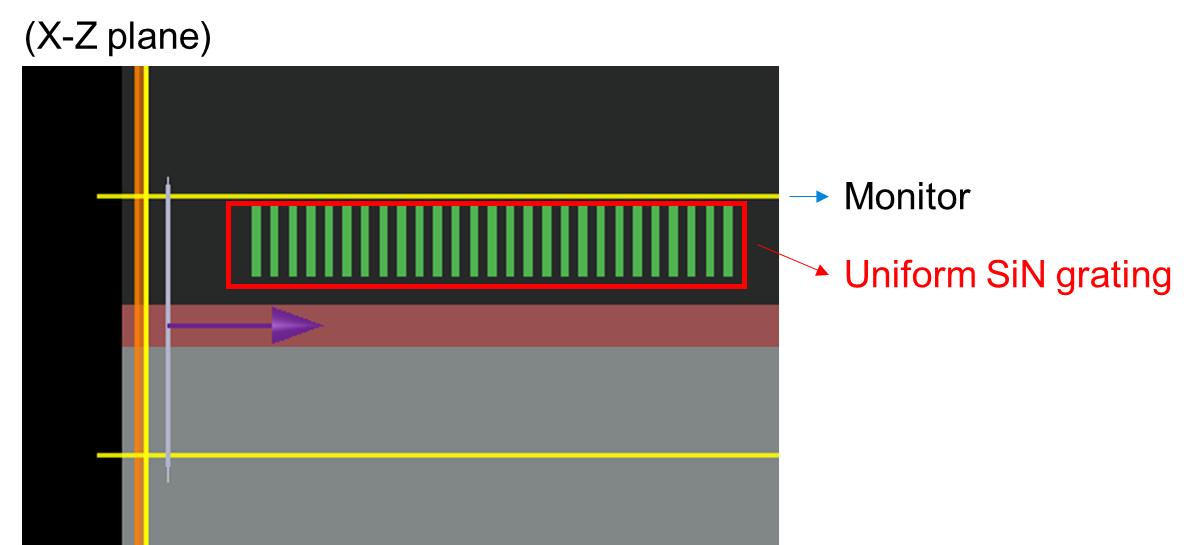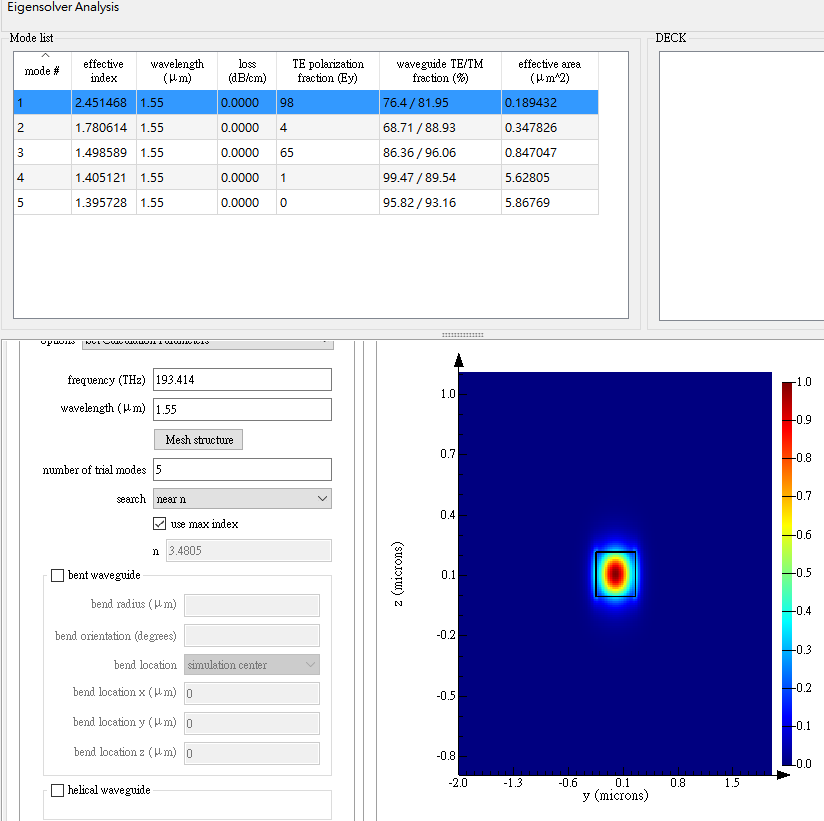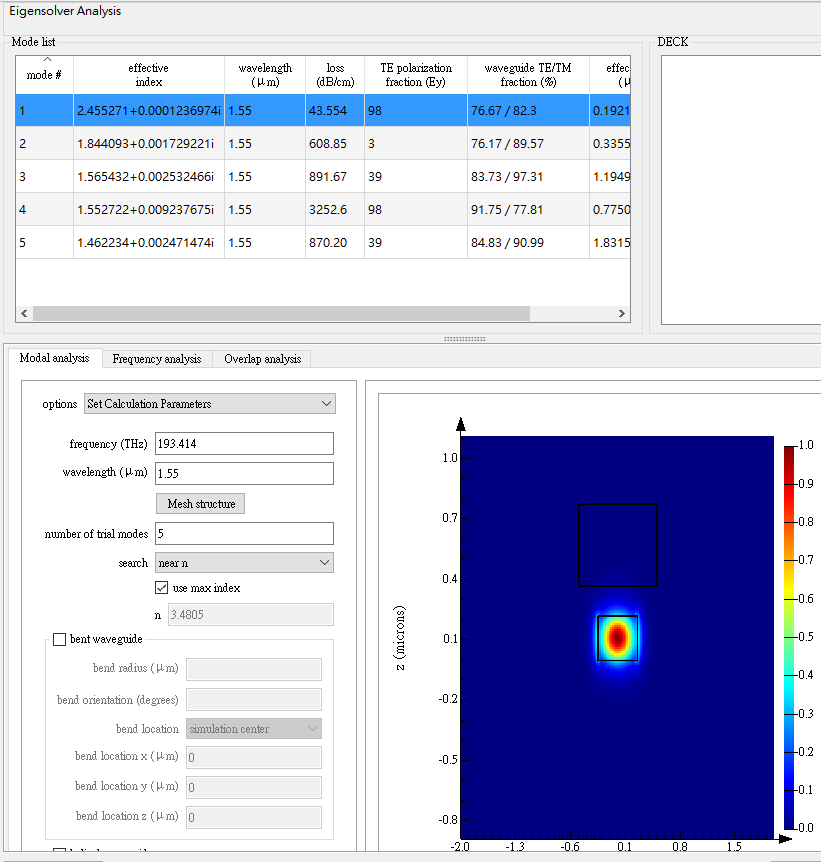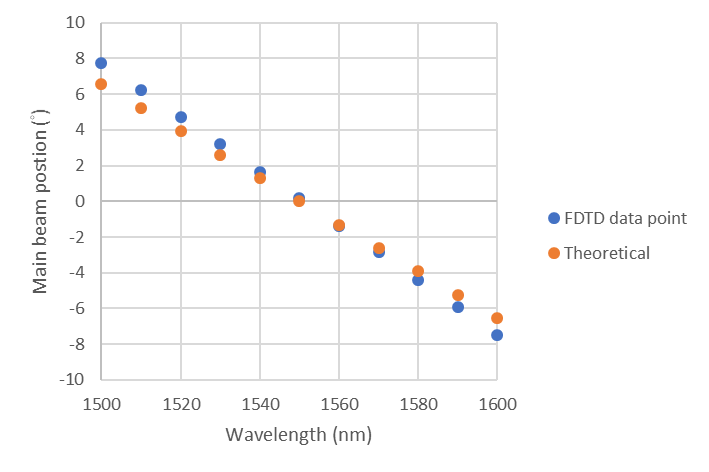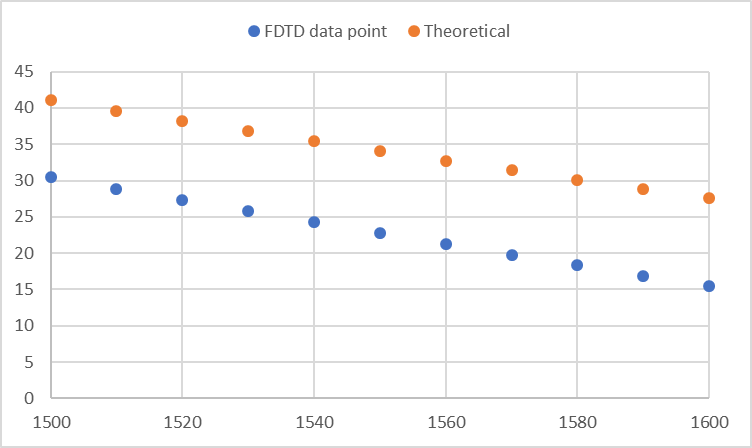-
-
September 26, 2023 at 9:17 am
KENNY.HH.CHEN
SubscriberHi, all
I simulated the antenna emission angle by positioning the monitor to capture the calculated far-field data, and I verified the simulation results using theoretical formulas.The emission angle is defined as the coordinates of the maximum E^2 intensity in the far-field pattern.The theoretical formula is given by sin(θ) = (neff * λ) / Λ, where θ represents the emission angle, λ is the wavelength, and Λ stands for the grating pitch. Following this, θ will be recalculated using Snell's law because the grating is located in the cladding.The neff value is calculated using Lumerical MODE solver under two conditions:(1) Only Si waveguide --> neff1=2.451
(2) SiN block and Si waveguide --> neff2 = 2.455
The simulated results were in agreement with the theoretical formulas, particularly for normal emission (θ = 0), under the conditions of SiN pitch at approximately 630 nm and a duty ratio of approximately 0.55.
However, when I changed the SiN pitch to 750 nm (with a duty ratio of approximately 0.467), the emission angles calculated from the far-field results did not align with the values predicted by the theoretical formulas.
Please help me analyze this issue further.
Thank you.
-
September 26, 2023 at 7:27 pm
Guilin Sun
Ansys EmployeeThere might be theoretical issue you may need to consider. Does the theory works for all the duty cycle cases? is the SiN grating effective index correct? it is bragg waveguide grating so the waveguide neff is different from the WG grating.
The trend is the same. there might be a systematic error.
-
- The topic ‘Grating emission angle issue’ is closed to new replies.



-
4512
-
1494
-
1386
-
1209
-
1021

© 2025 Copyright ANSYS, Inc. All rights reserved.

